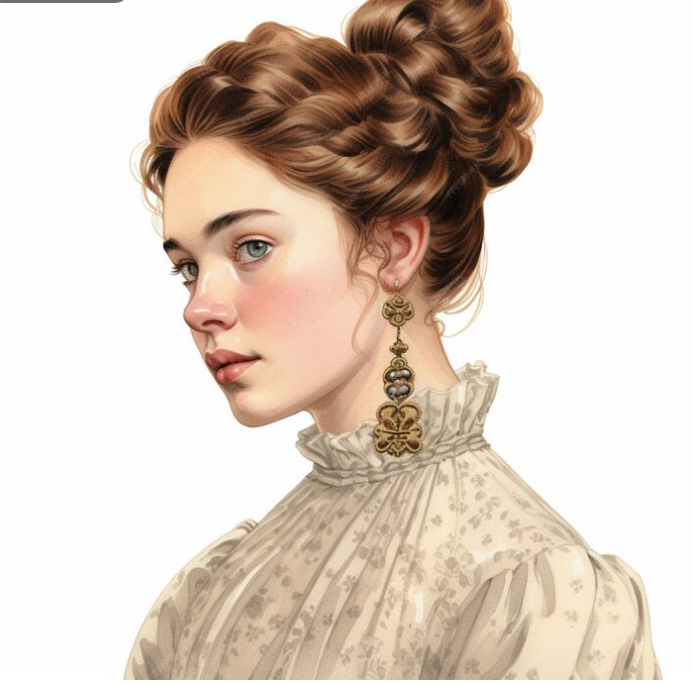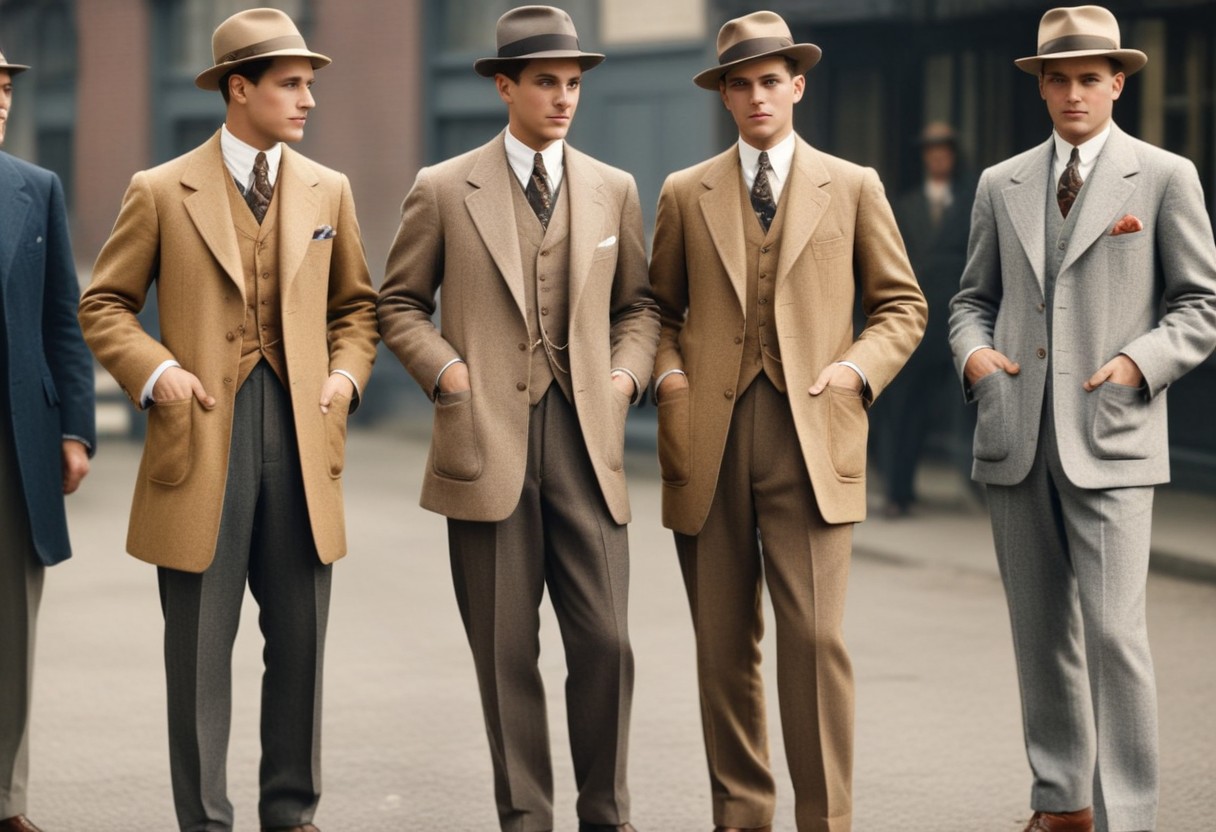Art and fashion colleges in Uganda are experiencing significant transformation as they evolve to keep pace with the latest trends and modern art. This evolution is driven by a combination of technological advancements, a growing appreciation for creative industries, and an increasing number of collaborations with international institutions. The changes reflect a broader shift within Uganda’s educational landscape, where there is a concerted effort to align with global standards and foster innovation.
One of the key drivers of this evolution is the integration of technology into the curriculum. Institutions such as the Margaret Trowell School of Industrial and Fine Arts at Makerere University are incorporating digital design and multimedia courses, ensuring that students are well-versed in contemporary design tools. This includes the use of software like Adobe Creative Suite and AutoCAD, which are essential in modern art and fashion design. The introduction of these courses is in response to the global shift towards digitalization in the arts and fashion industries.
Moreover, Ugandan art and fashion colleges are increasingly adopting a multidisciplinary approach. This means that students are not only trained in traditional art forms but also in related fields such as business management, marketing, and entrepreneurship. The International University of East Africa, for instance, offers programs that blend fashion design with business studies. This approach prepares graduates to navigate the commercial aspects of the creative industries effectively, making them more competitive in the job market.
The adoption of modern art trends is also evident in the growing emphasis on sustainability and ethical fashion. Colleges are integrating sustainable design principles into their curricula, reflecting a global movement towards eco-friendly and socially responsible fashion. Students are encouraged to use sustainable materials and techniques in their projects, aligning with international trends that prioritize environmental consciousness. Workshops and seminars on sustainable fashion are becoming more common, featuring collaborations with NGOs and industry experts who provide practical insights and real-world applications.
International collaborations and exchanges play a crucial role in the evolution of Uganda’s art and fashion education. Institutions like the Uganda Martyrs University have established partnerships with universities in Europe and the United States, facilitating student and faculty exchanges. These collaborations expose Ugandan students to global perspectives and contemporary practices in art and fashion, enriching their educational experience and broadening their creative horizons. Additionally, such partnerships often include joint research projects and international exhibitions, further integrating Ugandan art and fashion into the global context.
The impact of these changes is reflected in the achievements of Ugandan students and alumni. For instance, the annual Kampala Fashion Week has become a significant platform for showcasing the talents of graduates from local colleges. Designers such as Anita Beryl, a graduate of the YMCA Comprehensive Institute, have gained international recognition for their work, illustrating the high standards of education and training provided by Ugandan institutions.
In terms of numbers, enrollment in art and fashion programs has been steadily increasing. According to data from the National Council for Higher Education, the number of students enrolled in creative arts programs rose by approximately 15% over the past five years. This growth indicates a rising interest in the creative industries among Ugandan youth, driven by the enhanced quality and relevance of the educational offerings.
Art and fashion colleges in Uganda are evolving through the integration of technology, multidisciplinary approaches, a focus on sustainability, and international collaborations. These changes are positioning Uganda as a burgeoning hub for modern art and fashion, with institutions producing graduates who are well-equipped to meet the demands of the global creative industries. The continuous improvement in educational standards and the increasing recognition of Ugandan talent on the international stage underscore the success of these efforts.

The Role of Government in Supporting Art and Fashion Colleges in Uganda
The Ugandan government plays a pivotal role in improving and providing resources to art and fashion colleges, recognizing the importance of the creative industries in national development. Through various initiatives and funding mechanisms, the government supports the enhancement of educational standards, infrastructure development, and the promotion of innovation within these institutions. This concerted effort aligns with Uganda’s broader strategic goals to diversify its economy and harness the potential of the creative sector.
One of the primary ways the government contributes is through financial support and funding allocations. The Ministry of Education and Sports, which oversees higher education, allocates budgetary funds to art and fashion programs within public universities and colleges. For instance, Makerere University, home to the prestigious Margaret Trowell School of Industrial and Fine Arts, receives significant government funding. This financial support is crucial for the acquisition of modern equipment, improvement of facilities, and development of new programs that are in line with current industry standards.
In recent years, the government has also initiated specific projects aimed at upgrading the infrastructure of art and fashion colleges in Uganda. The Uganda Skills Development Project, partly funded by the World Bank, is a notable example. This project aims to enhance the capacity of technical and vocational education and training (TVET) institutions, including those offering art and fashion courses. The project focuses on improving physical infrastructure, providing state-of-the-art training equipment, and enhancing the curriculum to better meet industry needs.
Also, the government encourages partnerships between local institutions and international bodies. Through agencies like the Uganda National Commission for UNESCO, the government facilitates collaborations that bring in international expertise and resources. These partnerships often result in joint projects, exchange programs, and the introduction of global best practices into the local curriculum. Such collaborations are essential for exposing Ugandan students and faculty to the latest trends and techniques in art and fashion.
The government also promotes the creative industries through policy frameworks and strategic plans at art and fashion colleges in Uganda. The Uganda Vision 2040, a long-term development plan, highlights the creative arts as a sector with significant growth potential. The plan advocates for investment in creative education, recognizing its role in fostering innovation and cultural heritage preservation. By prioritizing the creative industries, the government underscores the importance of art and fashion education as a catalyst for economic growth and social development.
Moreover, there are targeted initiatives aimed at supporting young talent and entrepreneurs in the creative sector. The Youth Livelihood Programme, managed by the Ministry of Gender, Labour, and Social Development, provides grants and training to young people, including those in the art and fashion industries. This program helps graduates from art and fashion colleges to start their own businesses, thereby contributing to job creation and economic diversification.
Government efforts are also complemented by advocacy and regulatory bodies such as the Uganda National Cultural Centre (UNCC). The UNCC plays a vital role in promoting cultural and artistic activities, organizing exhibitions, and providing platforms for artists and designers to showcase their work. By fostering a vibrant cultural scene, the UNCC supports the objectives of art and fashion colleges in nurturing creative talent.
The impact of these governmental efforts is also very clear and evident in terms of numbers. According to the National Council for Higher Education, there has been a steady increase in the number of students enrolling in creative arts programs at art and fashion colleges in Uganda, with a reported 20% increase over the past decade. This growth reflects the enhanced attractiveness of these programs due to improved resources and government support.
The Ugandan government significantly influences the advancement of art and fashion colleges through financial support, infrastructure development, international collaborations, and strategic policy frameworks. These efforts not only enhance the quality of education but also foster a conducive environment for the creative industries to thrive, contributing to Uganda’s economic and cultural development.
Fashion and Design Schools in Uganda Are Gaining Traction Day by Day
Fashion and design schools in Uganda are evolving through several key developments. Firstly, these institutions are integrating advanced technology into their curricula. Schools like the International University of East Africa offer courses in digital design and multimedia arts, ensuring students are proficient with industry-standard software such as Adobe Creative Suite and AutoCAD.
The importance and focus on sustainability and ethical fashion are increasing rapidly. Programs now include sustainable design principles, encouraging the use of eco-friendly materials and practices. Workshops and seminars often feature industry experts discussing sustainable fashion trends.
The schools are fostering multidisciplinary approaches. Courses now blend fashion design with business and marketing, equipping students with the entrepreneurial skills necessary to succeed in the global market. This is evident in institutions like the YMCA Comprehensive Institute, which offers tailored courses that merge creative and business skills.
International collaborations are also becoming more prevalent. Partnerships with global institutions facilitate student and faculty exchanges, joint research, and exposure to global design trends. For example, the Margaret Trowell School of Industrial and Fine Arts collaborates with universities in Europe and the U.S., broadening students’ perspectives.
One of the most supportive actions by the government is the support through initiatives and funding to enhance the infrastructure and resources, making Ugandan fashion and design schools more competitive and relevant on the international stage.


Top 5 Art and Fashion Colleges in Uganda and Why They Are The Pioneers In Skill Learning
Uganda is home to several reputable art and fashion colleges, each distinguished by unique strengths that contribute to their standing in the industry. The following art and fashion colleges in Uganda are considered top-notch for various reasons, including their comprehensive curricula, state-of-the-art facilities, esteemed faculty, and strong industry connections.
Margaret Trowell School of Industrial and Fine Arts, Makerere University
The Margaret Trowell School of Industrial and Fine Arts (MTSIFA) at Makerere University is arguably the most prestigious art school in Uganda. Established in 1937, it has a long-standing history of producing some of the country’s most prominent artists and designers. The top reasons for their excellence are:
- Comprehensive Curriculum: MTSIFA offers a wide range of programs including painting, sculpture, graphic design, textiles, ceramics, and photography. The curriculum is designed technically to inculcate creativity and practical skills.
- Experienced Faculty: The school boasts a team of highly qualified lecturers, many of whom are renowned artists and scholars in their respective fields.
- Research and Innovation: Emphasis on research and innovation ensures that students are engaged in cutting-edge practices. The school frequently hosts exhibitions, workshops, and seminars featuring local and international artists.
- State-of-the-Art Facilities: MTSIFA is equipped with modern studios, galleries, and computer labs, providing students with the necessary tools to hone their skills.
- International Collaborations: The school has partnerships with various international institutions, facilitating exchange programs and joint projects that expose students to global trends in art and design.
International University of East Africa (IUEA) – Faculty of Art and Design
The Faculty of Art and Design at IUEA is known for its modern approach to art education, integrating technology and business acumen with traditional art skills. The top reasons for their excellence are:
- Technology Integration: IUEA’s curriculum includes courses on digital design, multimedia arts, and animation, reflecting the latest industry trends.
- Business and Entrepreneurship: Programs are designed to equip students with business and marketing skills essential for success in the competitive art and fashion industries.
- Experienced Faculty: The faculty comprises professionals with extensive industry experience, providing students with practical insights and mentorship.
- Modern Facilities: The university offers well-equipped studios, computer labs, and a digital media center, supporting a broad range of creative activities.
- Industry Connections: IUEA has strong ties with local and international fashion and design industries, offering students internship opportunities and exposure to real-world projects.
Kampala University – School of Industrial and Fine Art
Kampala University’s School of Industrial and Fine Art is renowned for its focus on practical skills and industry readiness. The top reasons for their excellence are:
- Hands-On Learning: The school emphasizes practical training, with a curriculum designed to provide students with hands-on experience in various art and design disciplines.
- Diverse Programs: It offers courses in areas such as fashion design, interior design, fine art, and graphic design, catering to a wide range of interests.
- Professional Development: The school facilitates workshops, industry visits, and guest lectures from leading professionals, ensuring students stay updated with industry trends.
- Supportive Environment: With smaller class sizes, students benefit from personalized attention and mentorship from faculty.
- Community Engagement: The school actively engages with the local community through art exhibitions, fashion shows, and cultural events, providing students with platforms to showcase their work.
YMCA Comprehensive Institute – Fashion and Design Department
The YMCA Comprehensive Institute’s Fashion and Design Department is considered one of the leading art and fashion colleges in Uganda, aspiring fashion designers in Uganda. The top reasons for their excellence are:
- Specialized Focus: The department offers specialized courses in fashion design, tailoring, textile design, and fashion merchandising.
- Industry-Relevant Skills: The curriculum is tailored to equip students with skills that meet industry demands, including pattern making, garment construction, and fashion illustration.
- Experienced Instructors: The faculty includes seasoned professionals who bring a wealth of experience and industry knowledge to the classroom.
- Practical Experience: Students are required to complete internships and participate in fashion shows, gaining practical experience and exposure to the fashion industry.
- Recognition: Graduates from the YMCA Comprehensive Institute have made significant contributions to the fashion industry, both locally and internationally.
Nkumba University – School of Commercial, Industrial Art and Design
Nkumba University’s School of Commercial, Industrial Art and Design is known for its robust academic programs and commitment to fostering innovation and creativity. The top reasons for their excellence are:
- Comprehensive Programs: The school offers a range of programs including commercial art, industrial design, and fashion design, providing a well-rounded education.
- Innovative Teaching Methods: The school employs innovative teaching methods, encouraging students to experiment with new ideas and technologies.
- Experienced Faculty: The faculty comprises accomplished artists and designers who provide mentorship and guidance.
- Modern Facilities: The school is equipped with advanced facilities, including design studios, workshops, and computer labs.
- Industry Collaboration: Collaborations with industry partners ensure that the curriculum remains relevant and that students have opportunities for internships and practical projects.
Send Your Children to Art and Fashion Colleges in Uganda for A Better Future


Sending children to art and fashion colleges in Uganda offers numerous benefits, both for the students themselves and for the broader economy and society. Here are the main reasons why parents should consider these institutions for their children’s higher education, backed by facts and numbers.
Growing Industry and Employment Opportunities
The creative arts and fashion industries in Uganda are rapidly growing sectors with increasing employment opportunities. According to a report by the Uganda Bureau of Statistics, the creative industries contributed approximately 3.2% to Uganda’s GDP in recent years, indicating their significant economic impact. As the demand for creative professionals rises, graduates from art and fashion colleges find themselves well-positioned for lucrative careers in various fields such as fashion design, graphic design, digital media, and interior design.
Skill Development and Versatility
Art and fashion colleges in Uganda provide students with a diverse skill set that applies to multiple industries. Programs at institutions like the Margaret Trowell School of Industrial and Fine Arts and the International University of East Africa emphasize both creative and technical skills. Students learn traditional techniques alongside modern digital tools such as Adobe Creative Suite and AutoCAD, making them versatile professionals capable of adapting to different job roles. This comprehensive skill development ensures that graduates are not only creative but also proficient in the technical aspects of their chosen fields.
Entrepreneurial Opportunities
Art and fashion colleges in Uganda also place a strong emphasis on entrepreneurship. Many programs include courses on business management, marketing, and entrepreneurship. For example, the International University of East Africa integrates business studies into its art and design programs. This entrepreneurial focus prepares students to start their own businesses, contributing to economic development and job creation. With the increasing number of fashion shows, art exhibitions, and craft markets in Uganda, there are ample opportunities for graduates to showcase and sell their work.
Cultural Preservation and Innovation
Art and fashion colleges play a crucial role in preserving Uganda’s rich cultural heritage while also promoting innovation. Institutions like the Kampala University School of Industrial and Fine Art emphasize the importance of traditional crafts and indigenous art forms. By combining these traditional techniques with modern design principles, students can innovate and create unique products that appeal to both local and international markets. This blend of preservation and innovation ensures that Uganda’s cultural identity is maintained and celebrated.
International Exposure and Collaboration
Art and fashion colleges in Uganda have established numerous partnerships with international institutions, providing students with global exposure. For instance, the Margaret Trowell School of Industrial and Fine Arts has collaborations with universities in Europe and the United States. These partnerships facilitate student and faculty exchanges, joint research projects, and international exhibitions. Such exposure helps students gain a global perspective, learn about international trends, and network with professionals from around the world.
Supportive Government Policies
The Ugandan government actively supports the creative industries through various initiatives and funding mechanisms. Programs like the Youth Livelihood Programme provide grants and training to young people, including those in the art and fashion sectors. The government’s recognition of the creative industries’ potential is reflected in policies that promote education and training in these fields, ensuring a supportive environment for students and graduates at art and fashion colleges in Uganda.
Personal Development and Fulfillment
Studying art and fashion can be deeply fulfilling for students, allowing them to express their creativity and passion. This personal development aspect is crucial, as it fosters a sense of purpose and satisfaction. Engaging in creative activities has also been shown to have mental health benefits, including reducing stress and improving overall well-being.




